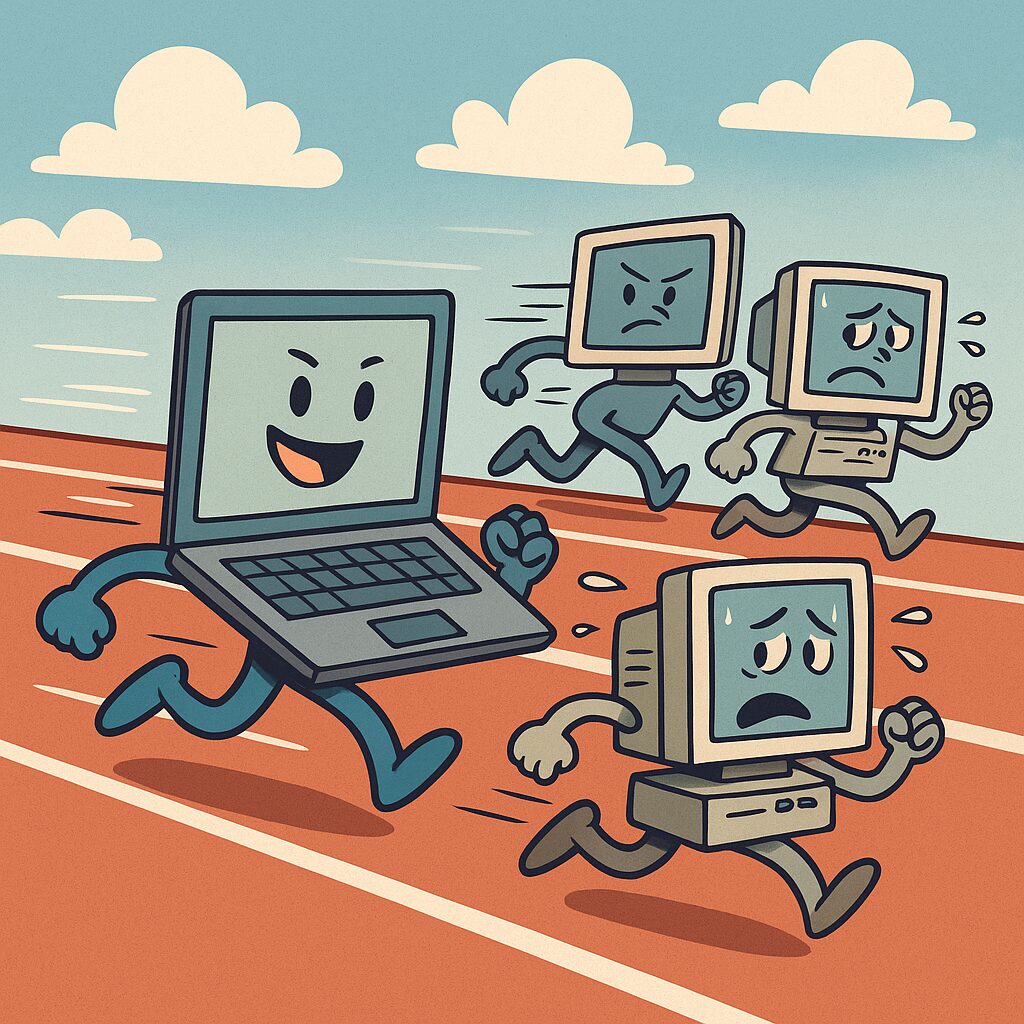Why Is My Computer So Slow? (And What You Can Do About It)

This week on our KFGO tech segment, we tackled a question we hear all the time: Why is my computer so slow? Whether it’s a budget laptop that never really had much speed to begin with or a once-speedy machine that’s gotten sluggish over time, there are a few common culprits. In this post, we’ll break it all down in plain language—and share what you can do about it.
Start with the Hardware: Some Computers Are Just Built Slow
Sometimes the slowness isn’t your fault—it was baked in from the start.
Many entry-level computers, like those with Intel N-series, Celeron, or some AMD budget processors, are built for lightweight tasks like web browsing, email, or streaming. They usually come with limited RAM (often 4–8GB) and slower processors. They’re not designed for multitasking or anything that demands a lot of power.
If this sounds like your computer, it may not be broken—it may just be doing its best with limited resources.
But What If It Used to Be Fast?
Now we’re getting to the heart of it. One of the most common things we hear is:
“It used to be fast when I bought it, but now it crawls.”
Let’s clear up one common myth: having a lot of files or programs on your computer doesn’t slow it down just because they’re there. That was true back in the day with spinning hard drives that needed defragmenting. But if you have a solid state drive (SSD) and a modern operating system, that’s not really how things work anymore.
Here’s what really slows down a once-speedy computer:
1. Old or Failing Hard Drives
Magnetic hard drives (HDDs) degrade over time. As they age, they lose their ability to store magnetic charges cleanly. That means your computer might have to re-read the same data multiple times just to open a file or load Windows.
Solid state drives (SSDs) are much faster—but they can degrade too. Over time, the cells that store data lose their ability to hold an electronic charge. You may still have plenty of free space, but the part of the drive where your operating system lives could be struggling to deliver data efficiently.
Pro Tip: Open Task Manager (Ctrl + Shift + Esc), go to the Performance tab, and see what’s maxed out. If your disk shows 100% usage, it might be time for a new drive.
2. Low RAM or an Overloaded Processor
If your computer runs out of RAM, it has to offload memory to the hard drive—which is much slower. If your CPU is pegged at 100%, it can’t keep up with your tasks.
Adding RAM or replacing the processor isn’t always easy (especially on laptops), but knowing what’s maxing out can help you decide what to upgrade—or whether it’s time for a new machine.
3. Driver Conflicts or Incompatibilities
Outdated or mismatched drivers can cause all sorts of weird slowdowns. The fix?
- Step 1: Run Windows Update and check the Additional Drivers section
- Step 2: Visit your PC manufacturer’s website (like Dell, HP, or Acer) and manually download the latest drivers for your exact model
4. A Solid-State Drive That Needs a Nudge
If you already have an SSD but your computer still runs slow, the drive could be degrading in a way that’s hard to detect. At DarkHorse IT, we use a tool called SpinRite 6.1 to gently exercise and refresh the drive’s storage cells. It’s available for purchase to the public, but we already own it—so if you bring your machine in, we can run it for you as part of our tune-up process.
Quick Takeaways
- Slow from the start? Budget hardware may be the culprit.
- Used to be fast? Check for aging drives, low RAM, or driver issues.
- Check your bottlenecks in Task Manager to see what’s maxed out.
- Upgrade to an SSD if you’re still using a magnetic hard drive.
- Keep drivers updated—especially after a Windows update.
- Still struggling? It might be time to run deeper diagnostics like SpinRite.
If your computer has been dragging lately—whether it’s a desktop or a laptop, a home system or an office workstation—we’d be happy to take a look. At DarkHorse IT, we help both business and residential clients figure out what’s going wrong and get things running smoothly again.
You can also check out past episodes and blog posts at kfgo.darkhorseit.com.
Liked this post? Follow this blog to get more.
 DarkHorse IT
DarkHorse IT
Leave a Reply